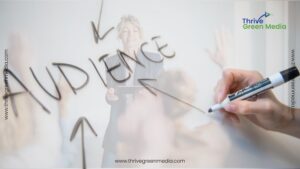|
Getting your Trinity Audio player ready...
|
Facebook represents a huge potential market for your social media efforts, but it is becoming increasingly difficult to stand out from the crowd which is why we have spent time compiling various statistics from different online mediums.
NOTE: The following statistics highlight some relevant and interesting Facebook facts and can ultimately help you to navigate it better, increasing your return on investment (ROI) and leading to greater marketing success on the platform.
Be Inspired!
1. The Highest traffic occurs mid-week between 1 to 3 pm. (Source: bit.ly blog)
On another note, a Facebook post at 7 pm will result in more clicks on average than posting at 8 pm (Source: Forbes). You have the potential to reach more consumers and drive higher traffic to your site during peak usage times, but people may be more likely to engage better in the evenings. Also, consider that Facebook has a global audience so you may want to plan around the timezone of your key market.
2. Facebook has more than 350 million active users
Over 35 million users update their status each day, with more than 55 million status updates each day. Over 2.5 billion pictures are uploaded to Facebook each month.
3. A peer-tp-peer file-sharing system called Wirehog was once a core function of Facebook
Mark Zuckerberg introduced the P2P file-sharing system when Thefacebook.com reach approximately 500,000 users, and once believed it would become a central component of the site. Wirehog was retired over fears of potential legal repercussions or copyright infringement in 2006
4. Mark Zuckerberg suffers from red-green colour blindness
Why blue and not some other colour? The color scheme choice is not random and there is a valid reason behind it. Mark Zuckerberg is colour-blind to red and green and therefore, blue is the richest colour for him. In an interview, he stated, “Blue is the richest colour for me — I can see all of blue.”This is why Facebook’s primary colour scheme is blue – although it certainly doesn’t hurt that blue is also strongly associated with trust and security, two concepts essential in getting people to voluntarily part with their personal information.
5. Facebook’s ‘Like’ button used to be the ‘Awesome’ button
Facebook engineer Andrew Bosworth said that he and other engineers were enthusiastic about the “Awesome” button, but that the idea was ultimately vetoed by Zuckerberg in 2007. The site eventually settled on the “Like” button, a decision that Bosworth said was met with a decidedly lukewarm reception.
6. First Face Of The Facebook
Al Pacino, an American actor was the first face of Facebook. The Site displayed a header image featuring a man’s face obscured behind the binary code… Remember that sad-looking blue guy on Facebook\’s homepage who used to stare you down every time you went to log in? They did away with him in 2007, so if you were late to the social networking party, then you probably have absolutely no idea what we\’re talking about. Anyway, according to David Kirkpatrick\’s The Facebook Effect, it turns out that the guy in the logo, created by Zuckerberg\’s friend and classmate Andrew McCollum, was none other than a young Al Pacino “covered with a fog of ones and zeros — the elementary components of digital media. The identity of the man could not be seen clearly, but it later came to light that the face was that of acclaimed actor Al Pacino” Crazy, right?
7. Peter Thiel, co-founder of PayPal, was the first major investor to back Facebook
Thiel, a luminary in the startup and venture capital worlds, saw the site’s potential and invested $500,000 into the young company in 2004. Thiel later sold his stake in the company for more than $1 billion. (source)
8. Facebook.com was originally acquired by Sean Parker
Sean Parker, the co-founder of the now-defunct music-sharing site Napster, originally acquired the facebook.com domain for $200,000. Parker was the driving force in the renaming of the site and was highly influential as the site exploded in popularity.
9. Facebook stores approximately 300 PETABYTES of user data on its servers
There are 1 million gigabytes in a petabyte. The entire written works of humankind, in every known language (including Latin and other historical languages) from the dawn of recorded history, would occupy approximately 50 petabytes. Think about that for a minute
10. In 2014, the alleged global economic impact of Facebook was approximately $227 billion
However, this statistic (and the methodology behind it) has been called into question by several leading economists. Whether you buy Facebook’s data or not, there’s no doubt that Facebook has had a serious impact on economies around the world.
11. In 2015, Facebook boasted 22% of WORLDWIDE mobile Internet advertising revenue
That means almost one-quarter of all advertising revenue generated from mobile Internet ads in a single year went to Facebook. Are you thinking what I’m thinking??….. I hope so
12. There are now more than 2 million active advertisers on Facebook
The popularity, impact, and cost-effectiveness of Facebook ads have made the site one of the most popular online advertising platforms in the world, and its upward trajectory seems likely to continue.
13. Facebook earns an average of $5.85 for every Facebook user in the United States and Canada
These two countries also have among the highest monthly active users of any country in the world, making North America a vitally important market for Facebook.
14. On average, the Like and Share Buttons are viewed across almost 10 million websites daily
(Source: Facebook as of 10/2/2014)
15. Posts published between 10 p.m. and 11 p.m. EST receive approximately 88% more interactions
On average, posts published between 10 p.m. and 11 p.m. EST receive approximately 88% more interactions than posts published at other times of the day. Also, ending posts with a question lifts interactions with those posts by an average of 162%… This is probably the best time to publish your Facebook posts.
16. There are about 30 million dead people on Facebook, and there are 83 million fake profiles (Source CNN)
The Takeaway: Nothing is perfect, so always remain thoughtful and strategic in your efforts. Dead, fake or not, these are still potential consumers. There are various reasons for fake profiles, including professionals doing testing and research, and people who want to segment their Facebook use more than is possible with one account.
17. Age 25 to 34, at 29.7% of users, is the most common age demographic. (Source: E-marketer 2012)
17. Age 25 to 34, at 29.7% of users, is the most common age demographic (Source E-marketer 2012)
What this means for you: This is the prime target demographic for many businesses’ marketing efforts, and you have the chance to engage these key consumers on Facebook.
18. Every 60 seconds on Facebook: 510 comments are posted, 293,000 statuses are updated and 136,000 photos are uploaded (Source: The Social Skinny)
The Implication: Again, there are a lot of engaged and active users, but also a huge amount of information competing for their attention, so quality and strategy on your part matter. Great content is key too.
SUGGESTED FOR YOU: Growth Marketing Trends You Should Not Ignore
19. Five new profiles are created every second. (Source: ALLFacebook 2021)
The Implication: Your potential audience on Facebook is growing exponentially.
20. Highest traffic occurs mid-week between 1 to 3 pm. (Source: Bit.ly blog)
On another note, a Facebook post at 7 pm will result in more clicks on average than a posting at 8 pm (Source: Forbes). Go figure. How this can help you: You have the potential to reach more consumers and drive higher traffic to your site during peak usage times, but people may be more likely to be more engaged in the evenings. This statistic may be a factor when you are planning social communication scheduling. (Also consider that Facebook has a global audience, so you may want to plan around the time zone of your key market.)


